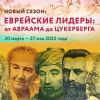Last week, Booknik read books by Robert Bober, and Dmitry Vedenyapin, plus two versions of the Creation; he also studied histories of the keffiyeh, and the first pogrom, attended the Yiddish Fest, dreamt of being a Rothschild, watched Jewish silent movies, cooked some sweet-potatoes soup, and a charlotte, felt for the goyim going for the Judaism, memorized the words “galut,” “giyur,” and “ghetto”, learned many new things about the olim party, and felt happy for kids in Israel. In the meantime, Booknik Jr. researched the origins of the Hebrew, read books by Hanoch Teller, and Gintaras Beresnevičius, learned how to do a decoupage, attended a show based on tales by Dr. Seuss about Horton the Elephant, and listened to poems by Kadya Molodovsky over the Booknik Radio.
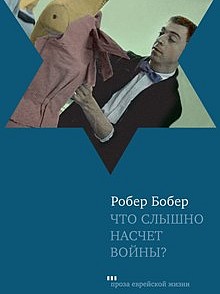
Quoi de neuf sur la guerre? by Robert Bober
It is decidedly impossible to tell this story without mentioning a jacket. Even though it is probably better to leave jackets out of it. It is usual with jackets. They are not obligatory, unlike coats, suits or the latest trend, dresses. If you come to a store today, you will see only those brazen dresses. Or at least tunics. No jackets, no. Yet if you think of a novel about clothes, a jacket will naturally be the female protagonist. Or, better, two jackets. If you want to depict a large city, tell about small people living in it. They are poor, ridiculous, absurd, and they are in love. They are losers. They are outcasts. They are nice, kind, unhappy with their enormous unhappiness, or they are happy with the memory of their tiny little happiness. You’d better tell their story as Fallada and O. Henry did, like Charlie Chaplin and Woody Allen showed it. Booknik reviewer Alexandra Dovlatova-Mechik reads the novel by Robert Bober published in the “Prose of Jewish Life” book series with the support of the AVI CHAI Foundation.
Cross-Cutting
Two Stories of the Creation. The Contemporary Jewish Commentary to the Book of Genesis, by Pinchas Polonsky
Once a Greek philosopher came to a Jewish man of wisdom, and said, “We, philosophers, believe that the world is eternal, and it has always been like this. You, the Jews, believe that it was created. Can you prove it?” “Yes, I can,” the wise man said. “Come tomorrow.” Everyone knows that Torah has two version of the creation of the world. Why it had to be this way, what it means, and how to reconcile these two versions, Pinchas Polonsky tells in his book, and Booknik reviewer Ariel Bulstein reads his argument, and prepares to answer his daughter’s question, “Where did everything that is come from?”
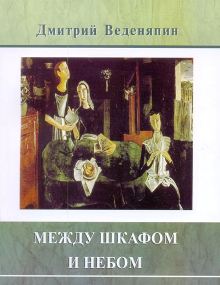
“A child’s world is balanced, and harmonious, and everything finds its place there, with no contradictions between a wardrobe and the skies. A child is small, weak, and powerless, he cannot put a scarf on, he cannot tie his shoelaces, and he has to eat what is healthy, and not what he wants to. Despite all this, he is a Deity, and the rest of us who are big, funny, or strict with him are but priests of this Deity.” Booknik reviewer Yevgeniya Ritz reads the book of memoirs and poems by Dmitry Vedenyapin.
…and many other small wonders in the Books & Reviews section.
Besieging the Jews and Conquering Them. The 897th Anniversary of the First Russian Pogrom
We know preciously little about the life of Jews in Kiev Rus. Apart from a single letter, there are no Jewish sources from that time. As for the Russian ones, all chronicles, hagiographies, and church disputes are too fragmentary, and too few. However, as a whole they depict a rather rosy situation, compared to the ones in Byzantium or Western Europe. Nevertheless, some authors believe that the dolce vita of the Ancient Russian Jewry came to its tragic end very promptly. The father of Russian history Vasily Tatishchev, for example, claimed that the first pogrom took place in Kiev as soon as 1113. Booknik contributor Yevgeny Levin tells the story, and its different interpretations.
…and many other historical junctures in the Articles & Interviews section.

Concerts are just a tip of the iceberg for the Yiddish Fest. Behind the scenes, there is a family-like circle called the Klezmerbund, uniting musicians from Russia, Ukraine, Europe, United States, and Canada. In the week of the festival, they strive to create everything we like to see and hear at concerts. Booknik reporter Tatiana Alexandrova attended the Yiddish Fest concerts, and now she tells what she saw, and heard there.
Ven Ich Bin a Rothschild
“If I were a rich man, I’d live a better life. This is about all I know in Yiddish. Oh, pardon, there is also bekitzer I picked up from that nice fellow Gotzman of the Liquidation TV series fame. Bekitzer, it would be swell to be a Rothschild, they had everything delivered to them on a plate. They had their millionaire uncles from birth. We, on the other hand, were constantly told to study harder, and to work diligently. Bollocks, no one becomes a millionaire through study and work. Here is an example for you. The richest Jew on the planet was a flunked student who had almost screwed up his own company.” Booknik’s Kiev reporter Lesya Bobrova studies the list of Jewish billionaires, and makes her far-reaching conclusions.
…and many other petty envies in the Events & Reports section.
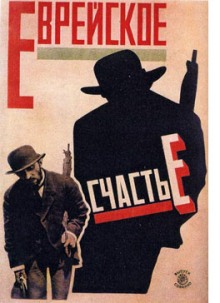
One can argue about the existence of Jewish cinema till the cows come home. This notion is as vague as Jewish poetry or Jewish painting. What is Jewish cinema? Does it mean motion pictures created by Jewish directors, or films about Jews, or films about Jewish national problems? Debates like this inevitably turn to repetition of clichés, and any sort of definition leaves a lot off-camera. Let us just say that the term “Jewish cinema” is intuitively clear. Lesya Bobrova reports on the new Jewish Cinema in the Ukraine anthology published several months ago by the Ukrainian Jewish Forum with the support of the Norwegian embassy in Kiev. It includes eight films produced in 1910-1936.
Some Facts about the Keffiyeh
Before, keffyiehs were white, black, orange, or green. And they were not only of those colors, for the author saw with his own blessed eyes the keffyiehs of tender lady underwear hues like pink, light blue or beige. These and other zany facts about the keffyieh are shared with Booknik readers by Daniel Ortegga Shapirra.
The Mystery of Sweet Potatoes
Yams, avocado, mango, these words could have come to us from Jules Verne novels about far countries, dangerous adventures, and travels with Captain Grant’s children. Our tireless culinary expert Keren Pevzner tells about the sweet potato that was born in South America, and incorporated into the Israeli cuisine.
…and many other interesting revelations in the Columns & Columns section.
Righteous among the Nations
The story told by Yelena Rimon took place in the former Soviet Union. It happened last century when the times were so hard that no one could go to Israel. If one was interested in Judaism, one could never receive a grant or a trip abroad (or an Israeli citizenship, or a loan to buy a house, and a membership in a loan society). One could only get big trouble for it (or very big trouble). However, there were some goyim who revealed this kind of interest, no matter what. They were very few, and very hard to suspect of self-interest. Any self-interest was plainly impossible. Or was it?
…and many other sudden discoveries in the Stories & Essays section.
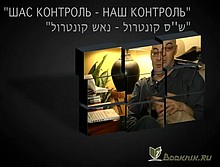
The political PR can work wonders. Three things are necessary: a big budget, good experts, and an adequate political opponent. Our knowing talking head Arkan Kariv tells how the Russian and CIS olim party Israel BaAliya remained on the bandwagon thanks to some talented PR moves.
Hebrarium, the Lexicon of Jewish Whatnots: G3
How long is galut? How to become a Jew? Why a cannon is like a ghetto? Watch G3-Hebrarium, and learn.
Don’t Grudge the Brew 44: A Different Charlotte
What is a charlotte? How hard can it be? Even a kid could do that. Pour some dough with fruit into a bowl, stick it into an oven, et voila! Thirty minutes, and it is ready. It is not necessary to roll, like a strudel. Why then does everyone get a very different charlotte in the end? The answer is obvious. A simple recipe is an excellent testing ground for experiments. Therefore, this apple pie made by our brilliant chef Roman Gershuni is not exactly as it was meant to be.
…and many other special treats in the Video Blog section.
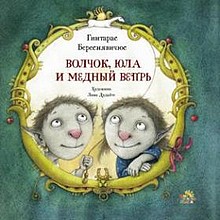
Humming-Top, Whirligig, and a Copper Boar, by Gintaras Beresnevičius
The creatures in this tale that live in the Woods are not yet familiar to us. All of them migrated from Baltic legends and tales. All of them but the two main characters, Humming-Top and Whirligig, the restless brother and sister who went out in search of a White Horse, seen in their dream. The road will lead them to the Wastes where Humming-Top will have to fight the Copper Boar. Humming-Top will of course win but you will learn how he could do it only when you read the entire tale.
The Living Language
Everyone knows they speak Hebrew in Israel. The Arabs there talk Arabic naturally, and our former compatriots prefer Russian at home. Elder people sometimes even remember a couple of words in Yiddish. Nevertheless, Hebrew is the main language in the State of Israel. Yet one hundred years ago, it was not. Zhenya Lopatnik tells our smallish readers how the Hebrew language came to be.
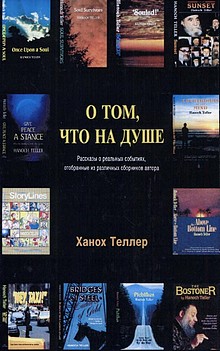
Once Upon a Soul, by Hanoch Teller
Israeli writer Hanoch Teller published a lot of short stories, all of them in English, and in Russian, there is only one book. Mr. Teller does not like long sentences, he never talks about Jewish philosophy, and he does not even suggest that we should think why we live at all. He just tells stories. Sometimes they are invented, and in these cases, the author writes a subtitle, “a legend.” More often, he describes what happened in real life. His characters are not righteous men from the Jewish history of the 14th century. They are common people who live side by side with us in Kiev, New York, Jerusalem, or Boston. Yelizaveta Guller reads the short story collection Once Upon a Soul.
Technicians, Artists, Decoupagists
Decoupage is the art technique that you can use to create a beautiful picture even if you cannot draw or paint. Strictly speaking, it is the same as an appliqué, only they do not use color paper for it. Take a paper napkin with a nice picture on it. You can use a usual dinner napkin or one of those sold in art supply stores. Katerina Bazhenova teaches our relatively inexperienced readers how to create a panel picture.
The Country for Young Kids
In Israel, you will never hear anything like, “Your kid is ill-behaved” or “You can’t raise your kid properly.” If your kid jumps on a chair in a café, no one will tell you, “Calm your child down immediately.” It is more likely that a waiter will politely warn you that jumping on chairs might be dangerous, for the kid might fall, and hurt him- or herself. And the grown-ups at the next table will smile and say, “What wonderful children you have. How old are they? Do they go to a pre-school?” There is a downside though. If you have a toddler with you, be prepared that every second a passer-by will pinch his or her cheek, and muss his or her hair. Without asking for a permission! Olya Yashina tells how children live in Israel, and grown-ups, too.
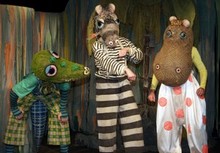
“What famous doctors do you know? Me? Oh, I’m a respected mother, I know a lot, like Dr. Spock, Dr. Komarovsky, and even Dr. Freud. My kids also know Dr. Ear-Throat-Nose, and Dr. How-Are-Our-Teeth. They hate the last one though. But there is another doctor, ver-ry famous. I could give you a hint here. He is a children’s doctor but he doesn’t treat anyone, and this is why everyone loves him. Of course! He’s Dr. Seuss!” Booknik Jr. contributing editor Alexandra Dovlatova-Mechik went to the show about Horton the Elephant, and
Booknik Radio Opens Its Gates
Booknik Jr. launches a new project. We have prepared audios of some Yiddish poetry by Kadya Molodovsky translated by Pavel Lion (AKA Psoy Korolenko) and Yana Ovrutskaya, and read by them, too.
…and many other mindful entertainments at Booknik Jr., also known as Family Booknik, our own web site for small kids and their somewhat larger parents.
Dances on the volcano! Booknik and Family Booknik are supported by the AVI CHAI Foundation.









